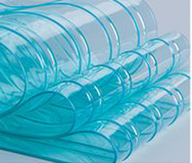- Afrikaans
- Albanian
- Amharic
- Arabic
- Armenian
- Azerbaijani
- Basque
- Belarusian
- Bengali
- Bosnian
- Bulgarian
- Catalan
- Cebuano
- Corsican
- Croatian
- Czech
- Danish
- Dutch
- English
- Esperanto
- Estonian
- Finnish
- French
- Frisian
- Galician
- Georgian
- German
- Greek
- Gujarati
- Haitian Creole
- hausa
- hawaiian
- Hebrew
- Hindi
- Miao
- Hungarian
- Icelandic
- igbo
- Indonesian
- irish
- Italian
- Japanese
- Javanese
- Kannada
- kazakh
- Khmer
- Rwandese
- Korean
- Kurdish
- Kyrgyz
- Lao
- Latin
- Latvian
- Lithuanian
- Luxembourgish
- Macedonian
- Malgashi
- Malay
- Malayalam
- Maltese
- Maori
- Marathi
- Mongolian
- Myanmar
- Nepali
- Norwegian
- Norwegian
- Occitan
- Pashto
- Persian
- Polish
- Portuguese
- Punjabi
- Romanian
- Russian
- Samoan
- Scottish Gaelic
- Serbian
- Sesotho
- Shona
- Sindhi
- Sinhala
- Slovak
- Slovenian
- Somali
- Spanish
- Sundanese
- Swahili
- Swedish
- Tagalog
- Tajik
- Tamil
- Tatar
- Telugu
- Thai
- Turkish
- Turkmen
- Ukrainian
- Urdu
- Uighur
- Uzbek
- Vietnamese
- Welsh
- Bantu
- Yiddish
- Yoruba
- Zulu
Exploring the Benefits and Applications of Flexible PVC Materials in Various Industries
The Versatility of Flexible PVC Applications and Benefits
Flexible polyvinyl chloride (PVC) is a synthetic polymer that has gained immense popularity across various industries due to its remarkable versatility and cost-effectiveness. This material is a type of PVC that has been modified with additional plasticizers, making it pliable and adaptable for a wide range of applications. Its unique properties, including flexibility, durability, resistance to environmental factors, and ease of processing, have established flexible PVC as a preferred choice in numerous sectors.
One of the most notable characteristics of flexible PVC is its ability to maintain structural integrity while being highly adaptable. This flexibility allows it to be used in the manufacture of various products, including electrical cables, medical devices, flooring materials, and upholstery, among others. For instance, in the electrical industry, flexible PVC sheaths protect wiring, preventing damage from impact, moisture, and abrasion. This property makes it a critical component in ensuring safety and longevity in electrical installations.
The Versatility of Flexible PVC Applications and Benefits
Flexible PVC is also prevalent in the construction industry. It is commonly used for flooring, wall coverings, and roofing. PVC flooring, for example, is favored for its durability and ease of maintenance. It is available in various colors and designs, making it a popular option for both residential and commercial spaces. Additionally, the water-resistant properties of flexible PVC make it an excellent choice for areas prone to moisture, such as bathrooms and kitchens.
flexible pvc

Another area where flexible PVC excels is in manufacturing consumer goods. From handbags to inflatable toys, the material is utilized for its lightweight nature and aesthetic versatility. Manufacturers can easily print graphics and designs on flexible PVC, allowing for customization that appeals to consumers. This has made flexible PVC a staple in the production of promotional items and packaging.
Moreover, the environmental impact of flexible PVC has evolved with advancements in manufacturing processes. Many companies are now focused on producing eco-friendly flexible PVC by incorporating recycled materials and reducing harmful additives. This shift not only helps in minimizing waste but also addresses the growing consumer demand for sustainable products.
Despite its numerous advantages, it is essential to acknowledge some concerns related to the use of PVC, particularly the environmental impact of its disposal. However, recent innovations in recycling technologies have opened up new possibilities for reusing flexible PVC, thus mitigating these concerns.
In conclusion, flexible PVC is a highly versatile material that offers a wide range of applications across multiple industries. Its flexibility, durability, and ease of processing make it an ideal choice for products that require both functionality and aesthetics. As industries continue to innovate and seek sustainable practices, the future of flexible PVC looks promising, with ongoing advancements aimed at reducing its environmental footprint while enhancing its utility. The adaptability of this material not only meets the demands of various sectors but also contributes to the development of innovative solutions that improve everyday life.
-
Industrial Strip Curtains - Durable PVC & Plastic Solutions for Industrial DoorsNewsJun.24,2025
-
PVC Curtain Strip – Durable Standard PVC Strips for DoorsNewsJun.10,2025
-
PVC Strip Curtain – Durable & Transparent Plastic Strips for Industrial Use Affordable PricesNewsJun.10,2025
-
Clear Plastic Door Curtains Durable & Insulating VisibilityNewsJun.09,2025
-
Commercial Strip Curtains Energy Savings & Durability for Industrial UseNewsJun.09,2025
-
Anti-Cold PVC Strip Curtains Thermal Insulation & Energy Saving SolutionsNewsJun.09,2025



